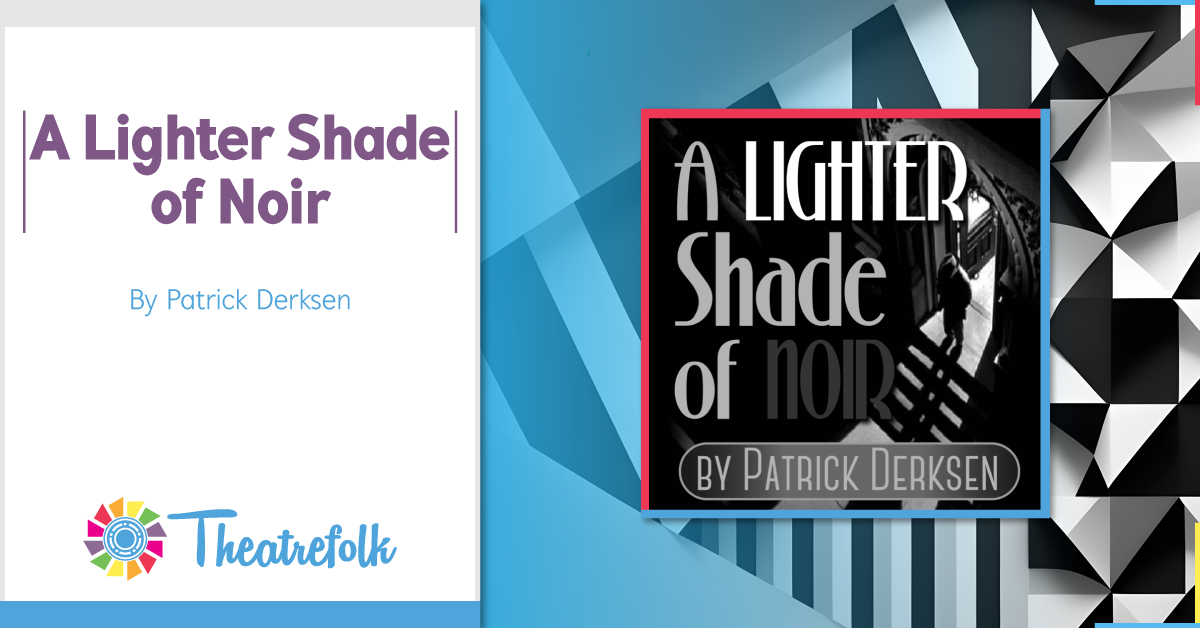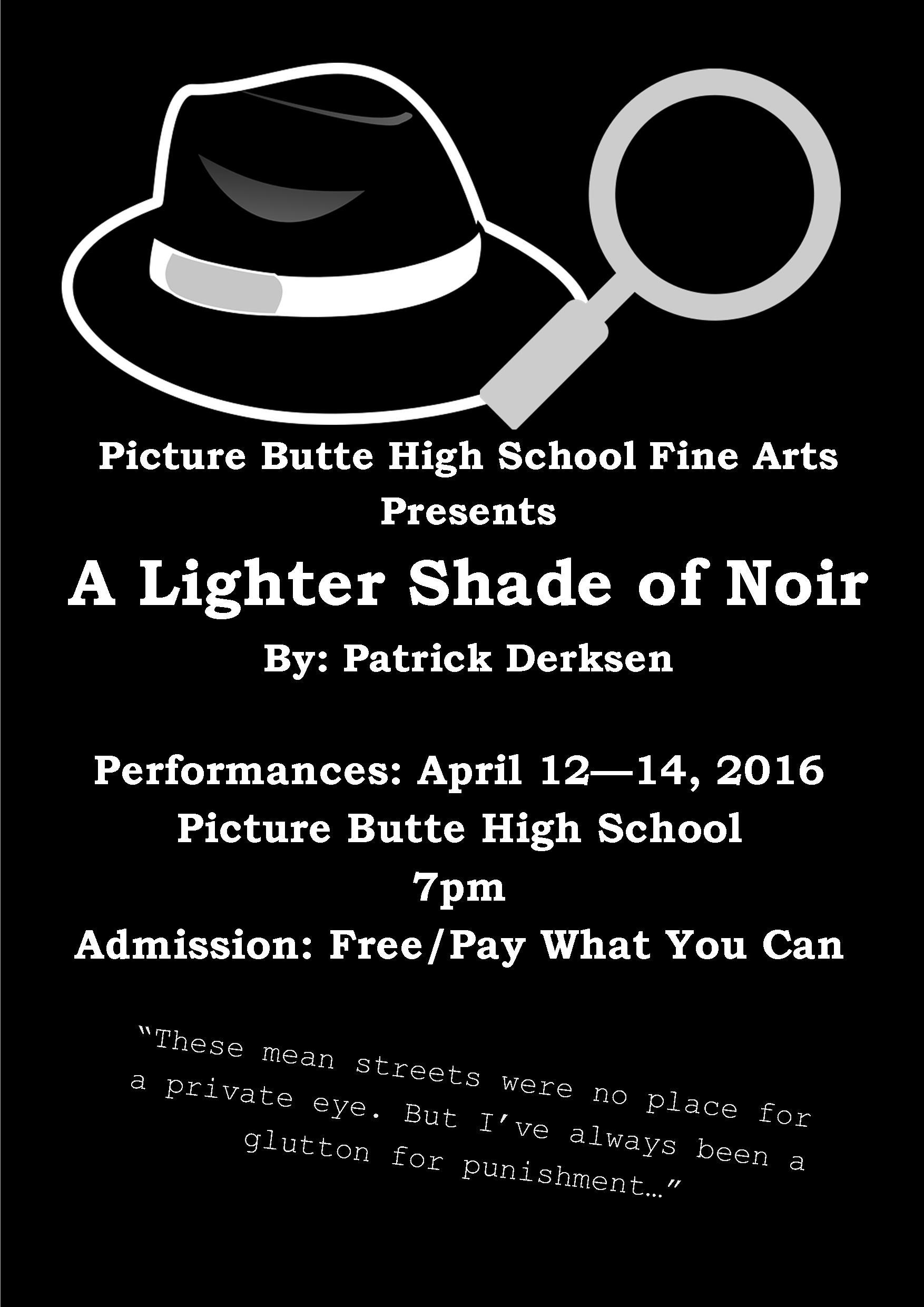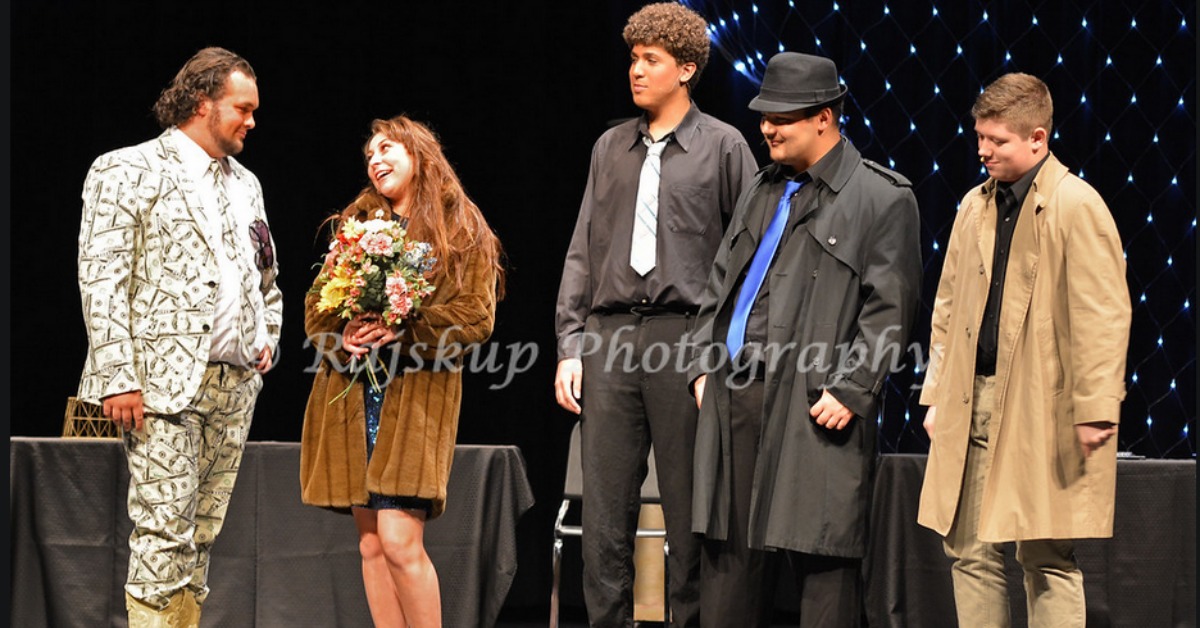Agatha Rex by Lindsay Price is a bold high school take on Antigone - packed with heart, conflict, and a powerhouse ensemble. One girl. One stand. One huge risk. *NEW COMPETITION VERSION AVAILABLE!*
Theatrefolk Featured Play - A Lighter Shade of Noir
Welcome to our Featured Play Spotlight. A Lighter of Shade of Noir by Patrick Derksen is a fabulously funny and high styling take on film noir - it’s a lighter shade of noir after all!
Trent Trowel is your typical gumshoe. Searching the mean streets for crimes to solve and dames to fall for. He joins some of the world’s most famous detectives at the International PD gala. There’s Shirley Holmes, Jean Louie Phillip Eustache… and Aunt Beatrice. But is this just an innocent gala? Will the world’s most dastardly villains foil them with a fiendish master plan? Will Aunt Beatrice ever get an English muffin? Everything is not what it seems.
Why did we publish this play?
What I love about this play is that it’s not just the high style of noir, which is a great genre to introduce to your students, but it also has so much humour. It makes me laugh every single time. It's A Lighter Shade of Noir after all. This play also gives students a chance to play high stylized characters who speak, move and act with specific mannerisms. Not to mention they all have something to strive for, there's so much at stake! It’s not just about a shallow character presenting a style. These characters have wants and they pursue those wants to the fullest.That’s the foundation of all good plays!
Let’s hear from the author!
1. Why did you write this play?
When my students knew that I wrote plays for our school, they started to make requests (maybe ‘demands’ is a better term; they are junior high students). By far the most requested genre was “mystery”, so I worked with them at studying the genre. I thought it would be fun to write something that celebrated the detective genre as well as poke fun at it.
2. Describe the theme in one or two sentences.
A major theme of this play is how the ‘loner’ characters find out that working together and synergizing gives better results. Related to that is how we should respect and value relationships; a major flaw for each of the main characters is that they take others for granted, and it comes back to bite them.
3. What’s the most important visual for you in this play?
I like how the same event gets shown many different ways. It’s somewhat of a trope for the genre, but it’s a great lesson that our perceptions don’t equal reality.
4. If you could give one piece of advice for those producing the play, what would it be?
Cast someone really good as Mr. Silencieux (who has no lines). I’ve seen this character steal the show with a good actor and director to create space for them to shine!
5. Why is this play great for student performers?
Students I’ve talked to appreciate how different the characters’ personalities are. It seems to create good fellowship as well, since it’s such an ensemble piece to pull off.



